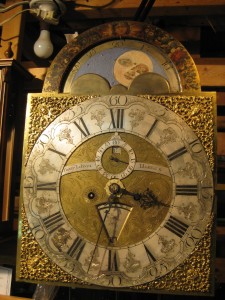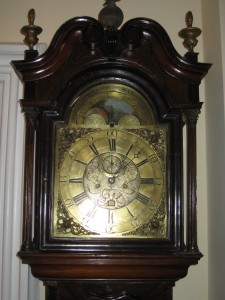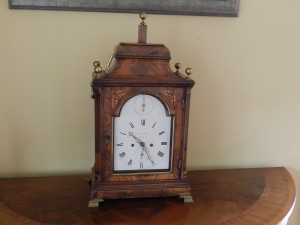I had a rare opportunity to restore this early 1700 Dutch clock which had been in storage for over 50 years and needed a lot of work.
The face shows the name Daniel LeFèvre – Haarlem. It has a calendar and a pie shape dial which indicates the day of the week. I have not been able to find information on Daniel LeFèvre but a Dutch clock expert, Mr. John Ruhland, agrees the clock is from the early 18th century.
It has the traditional Dutch striking mechanism, with 2 bells. The small bell is used for the half hour and it rings the number of strikes for the upcoming hour. That is: at 1:30, the clock strikes 2 on the small bell. Then on the hour, it strikes 2 on the big bell. It also has an alarm operated by a separate weight.
The case is in a very good condition.





